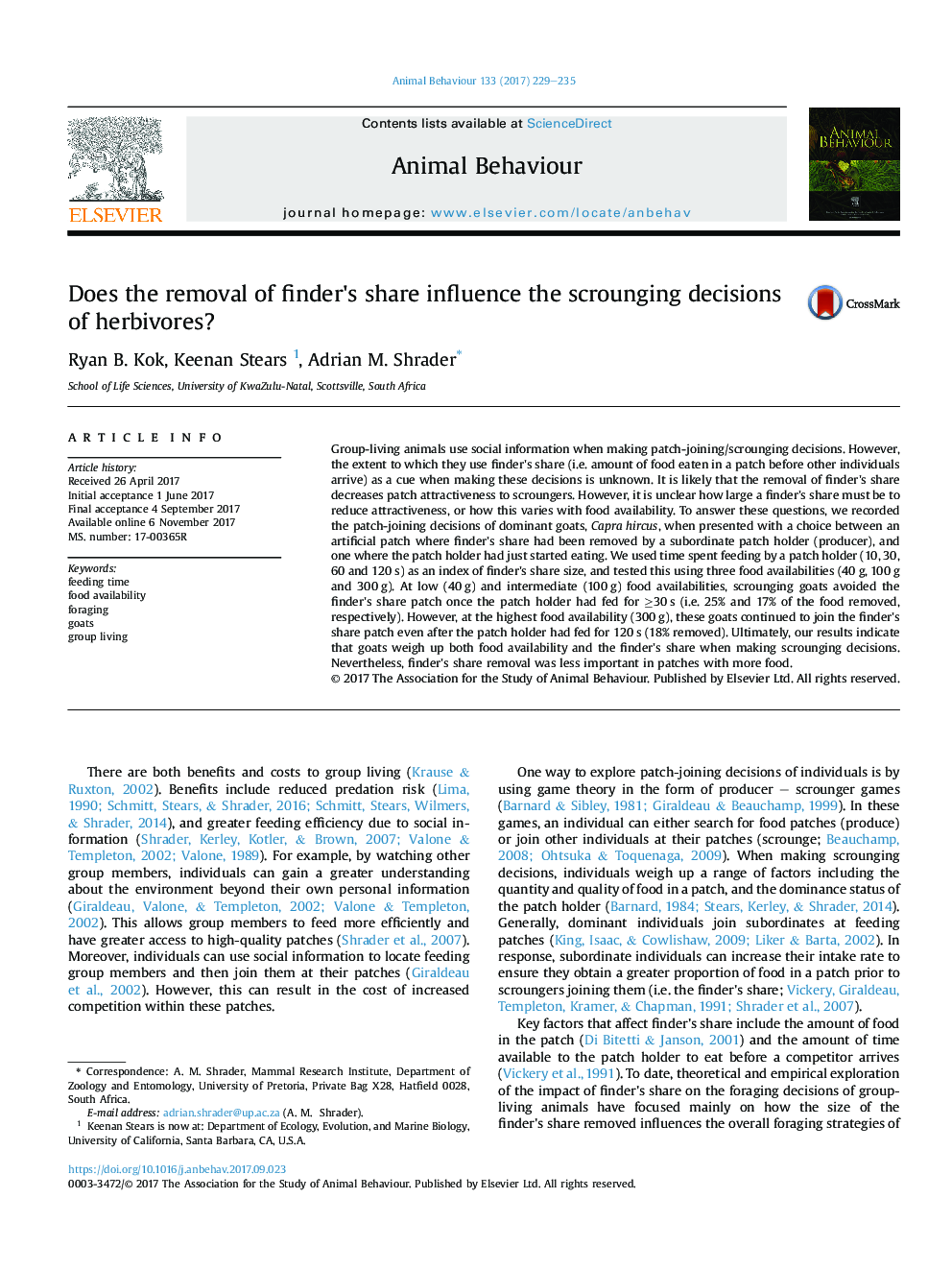| Article ID | Journal | Published Year | Pages | File Type |
|---|---|---|---|---|
| 8488836 | Animal Behaviour | 2017 | 7 Pages |
Abstract
Group-living animals use social information when making patch-joining/scrounging decisions. However, the extent to which they use finder's share (i.e. amount of food eaten in a patch before other individuals arrive) as a cue when making these decisions is unknown. It is likely that the removal of finder's share decreases patch attractiveness to scroungers. However, it is unclear how large a finder's share must be to reduce attractiveness, or how this varies with food availability. To answer these questions, we recorded the patch-joining decisions of dominant goats, Capra hircus, when presented with a choice between an artificial patch where finder's share had been removed by a subordinate patch holder (producer), and one where the patch holder had just started eating. We used time spent feeding by a patch holder (10, 30, 60 and 120 s) as an index of finder's share size, and tested this using three food availabilities (40 g, 100 g and 300 g). At low (40 g) and intermediate (100 g) food availabilities, scrounging goats avoided the finder's share patch once the patch holder had fed for â¥30 s (i.e. 25% and 17% of the food removed, respectively). However, at the highest food availability (300 g), these goats continued to join the finder's share patch even after the patch holder had fed for 120 s (18% removed). Ultimately, our results indicate that goats weigh up both food availability and the finder's share when making scrounging decisions. Nevertheless, finder's share removal was less important in patches with more food.
Related Topics
Life Sciences
Agricultural and Biological Sciences
Animal Science and Zoology
Authors
Ryan B. Kok, Keenan Stears, Adrian M. Shrader,
